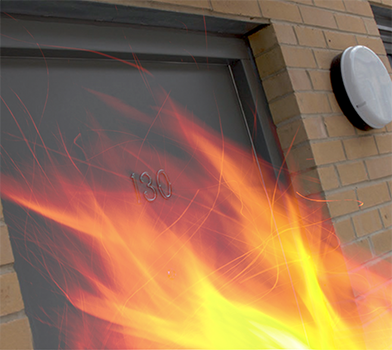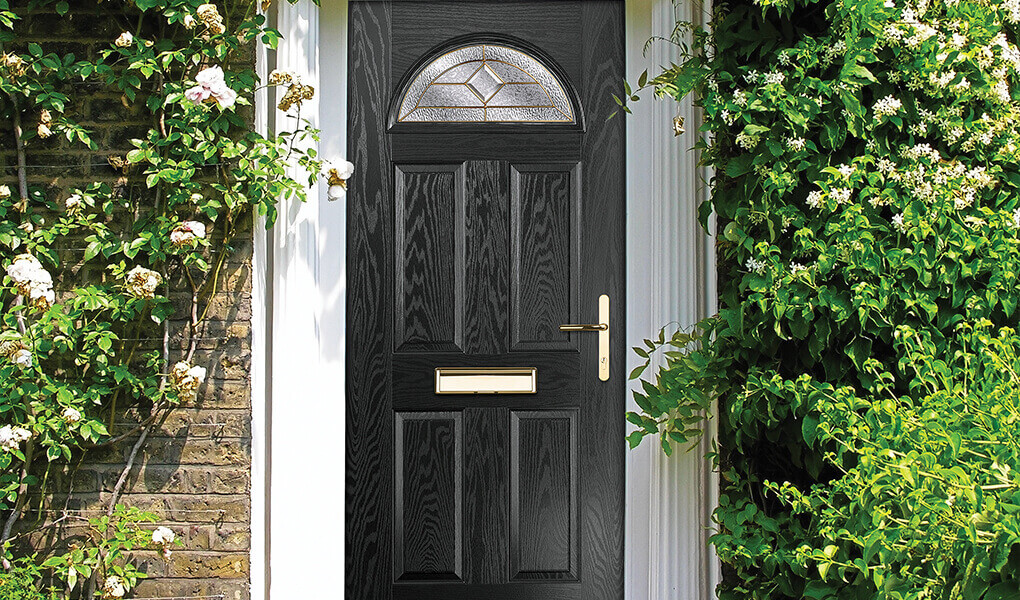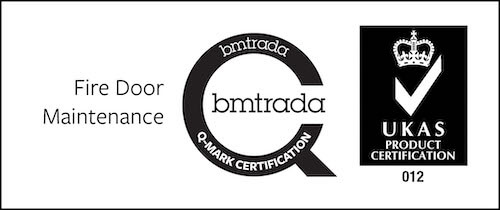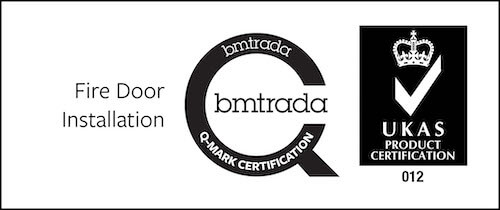Many of us will encounter fire doors at work or in public spaces, but when do you need them at home? Understanding fire doors can be a complicated subject, and many homeowners have questions about fire doors, which they often find difficult to get the answers they need.
With a bit of luck, this blog will give you a clear idea about fire doors and provide the information you need for total peace of mind.
What is a fire door?
A fire door is a specially constructed door, and when fitted correctly, it will increase the amount of time flames and smoke takes to pass through the door in the event of a fire. The most common fire door type is an FD30s fire door and has been assessed in a controlled environment to resist flames and smoke for a minimum of 30 minutes.
Fire doors are a part of the passive fire protection system. The structure of a fire door is that they potentially contain fires when they break out or slows down how quickly fire can spread.

When are composite fire doors needed?
We at Aim Windows supply and install external fire doors that have been fire tested for up to 30 minutes (FD30s). Our fireproof doors are a requirement for most flats, housing association properties, and as a consideration for any landlords.
Built and designed to meet all compulsory building and fire regulations for apartments, housing association buildings and flats, our comprehensive range of external fire doors offer exceptional function and style.
External fire safety doors can be installed in many different living environments; however, building regulations for fire doors state that fire doors must be used in new build or renovated properties that have 3 storeys or more.
Our 30-minute fire doors are an excellent option for installing fire doors in flat entranceways and have a solid core construction to achieve an optimum fire rating.

How often should fire doors be checked in the UK?
The current advice is to check fire doors once every six months, but it may leave you wondering what you need to look for in your fire doors.
Start by looking to see whether there are any obvious signs of damage to the fire door and frame. Look for any cracks, gaps or parts that don’t look secure. Check that the door and frame are fitted securely and are level.
Check the condition of the intumescent seals around the door too. The seals must be undamaged and fit snugly around the door to ensure that fire and smoke cannot get through.
Next, check to see how smoothly the fire door opens and closes. Make sure you can open the fire door fully, then see what happens when you let it go. Does the door close quickly and smoothly, without slamming, or is it catching on anything?
Double check that the locks, latches, and lever handle mechanisms work correctly and that the fixings are in good condition and secure. Inspect the hinges to see if they fit well. Look for any visible indications of wear and tear. If screws are missing, for example, that suggests the door might not be able to do its job correctly.
If the fire door fails on any of these points, no matter how minor, it must be quickly resolved as the efficiency of the door is likely to be compromised.
If you find yourself in any doubt, contact your fire door supplier, who can give you pinpoint advice.
What is the British Standard for fire doors?
Current Building Regulations in the UK are in the Fire safety: Approved Document B and require fire doors to be tested and certified to BS 476 Part 22 or BS EN 1634 Part 1, the European equivalent.
The BS 476 is split into many distinct parts. Part 22 of British Standard 476 tests the entire fire door unit to ensure all the components function and cooperate correctly as the BS 476 test grades are the fire resistance the door can withstand. For example, 30 minutes (FD30) or 60 minutes (FD60).
When should a fire door be replaced?
There are no set rules for how long fire doors should last, but you should consider how they are used and how frequently they are being inspected. Despite being sturdy, they are still susceptible to wear and tear over time.
Definite signs for a replacement fire door would include:
- If there is glass in a fire door and there are any cracks in a glass panel. In this case, it should be replaced, as this seriously affects the fire rating and protection of a fire door.
- Issues with closing the door or with keeping the door closed firmly.
- Gaps around the edge of the door when closed.
- A door that is too stiff or that is difficult to move easily.
- Broken or damaged hardware on the door.
All the above affect the efficiency of the fire door, significantly reducing the amount of time the fire door can protect a home from tragedy.


External Fire doors for homeowners in East London
At Aim Windows, we are experts in fire doors and can offer a broad selection of composite fire door styles for homeowners throughout East London. Our range of composite fire doors presents a lot of choices for those in East London properties, as well as our wide selection of windows, conservatories, roof lanterns and external doors.
Contact us today or call on 0207 537 0852 for more information.


